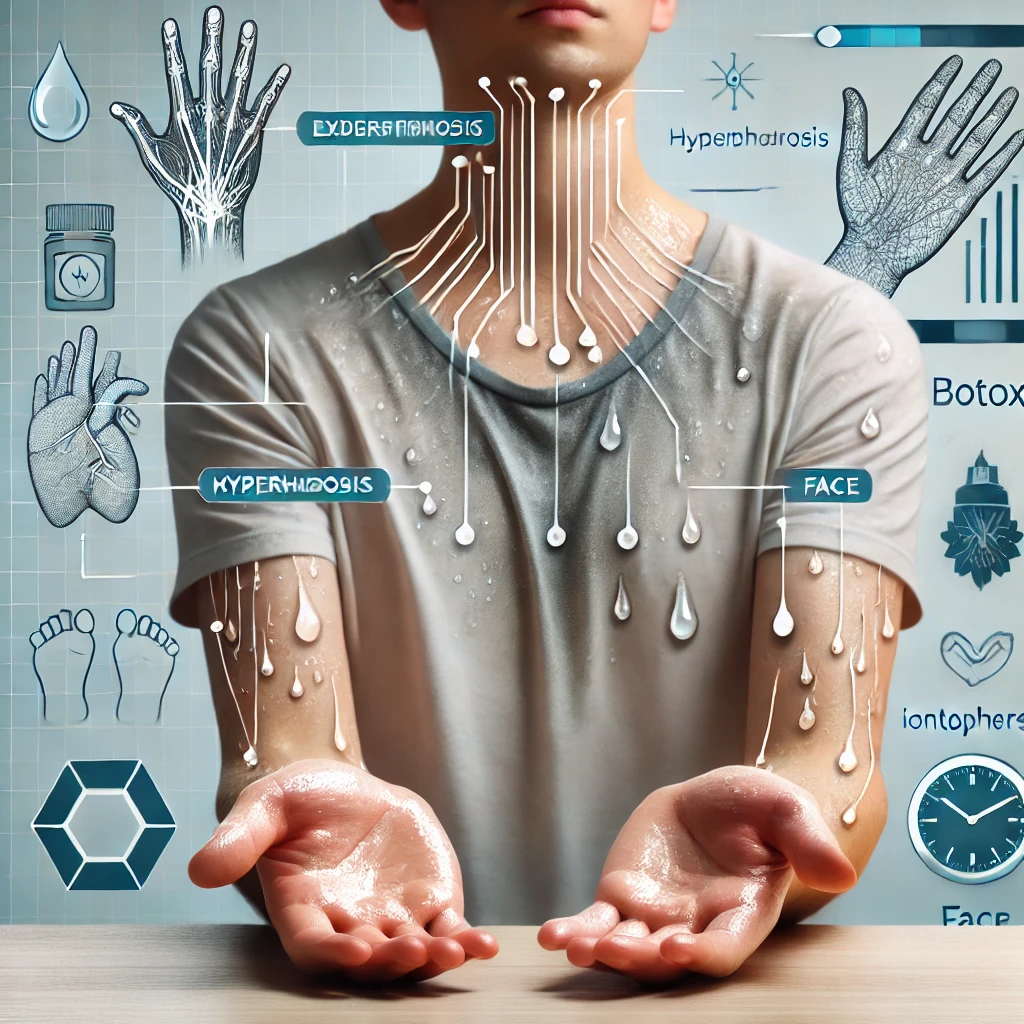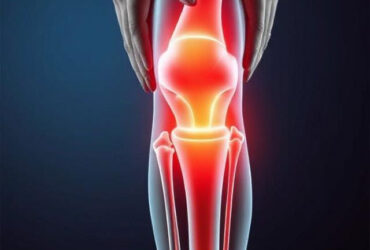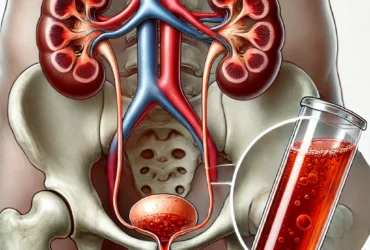What is Hyperhidrosis?
Hyperhidrosis is a condition characterized by excessive sweating, often in situations where sweating is not needed to regulate body temperature. While sweating is a normal bodily function, those with hyperhidrosis sweat more than necessary, sometimes leading to discomfort and self-consciousness.
Types of Hyperhidrosis
- Primary (Focal) Hyperhidrosis
Primary hyperhidrosis occurs in specific areas of the body, such as the hands, feet, underarms, or face. It is often not related to any underlying medical condition and can occur at any time, even without triggers like exercise or heat. - Secondary (Generalized) Hyperhidrosis
Secondary hyperhidrosis involves excessive sweating that affects larger areas of the body. It can be triggered by underlying medical conditions, such as diabetes, obesity, infections, or even certain medications.
Symptoms of Hyperhidrosis
- Excessive sweating in specific areas like palms, feet, underarms, or face
- Sweating that interferes with daily activities (e.g., difficulty holding objects or using electronics)
- Sweating that occurs without physical exertion or temperature changes
- Constantly damp or moist clothing, even in cooler environments
Causes of Hyperhidrosis
- Genetics: Primary hyperhidrosis can be hereditary, often running in families.
- Underlying medical conditions: For secondary hyperhidrosis, conditions like diabetes, thyroid problems, infections, and anxiety disorders can be contributing factors.
- Medications: Certain medications, such as antidepressants, pain relievers, and those for high blood pressure, can cause increased sweating.
- Lifestyle: Stress, anxiety, and intense physical activity can also lead to excessive sweating.
Diagnosis
To diagnose hyperhidrosis, we will perform a thorough medical evaluation, which may include:
- A physical examination and discussion of symptoms
- Laboratory tests to rule out any underlying conditions
- A specialized test, such as the starch-iodine test or quantitative sudomotor axon reflex test (QSART), to measure the degree of sweating
Treatment Options
- Antiperspirants
Over-the-counter or prescription-strength antiperspirants containing aluminum chloride can help reduce sweating in mild cases. - Iontophoresis
This involves using a mild electrical current to reduce sweat production, particularly effective for hands and feet. - Botox Injections
Botox can temporarily block the nerves that trigger sweating. It is most effective in treating underarm and hand hyperhidrosis. - Medications
Oral medications such as anticholinergics can reduce sweating, but they may have side effects like dry mouth or blurred vision. - Surgical Options
In severe cases, a procedure called sympathectomy can be done to cut or clamp the nerves responsible for excessive sweating. - Lifestyle Changes
Avoiding triggers such as spicy foods, hot environments, or stress can also help manage symptoms.
When to Seek Medical Help
If excessive sweating is affecting your quality of life, causing embarrassment, or leading to skin irritation, it’s important to consult with a healthcare professional. Early intervention can help manage symptoms and prevent complications.
Why Choose Our Clinic?
At Advanced Poly Clinic, we understand how disruptive hyperhidrosis can be to your daily life. Our personalized treatment plans are designed to address your unique needs and help you manage excessive sweating effectively. We provide a range of treatments tailored to your condition and comfort.
📞 01-4531078 or 01-4543386






